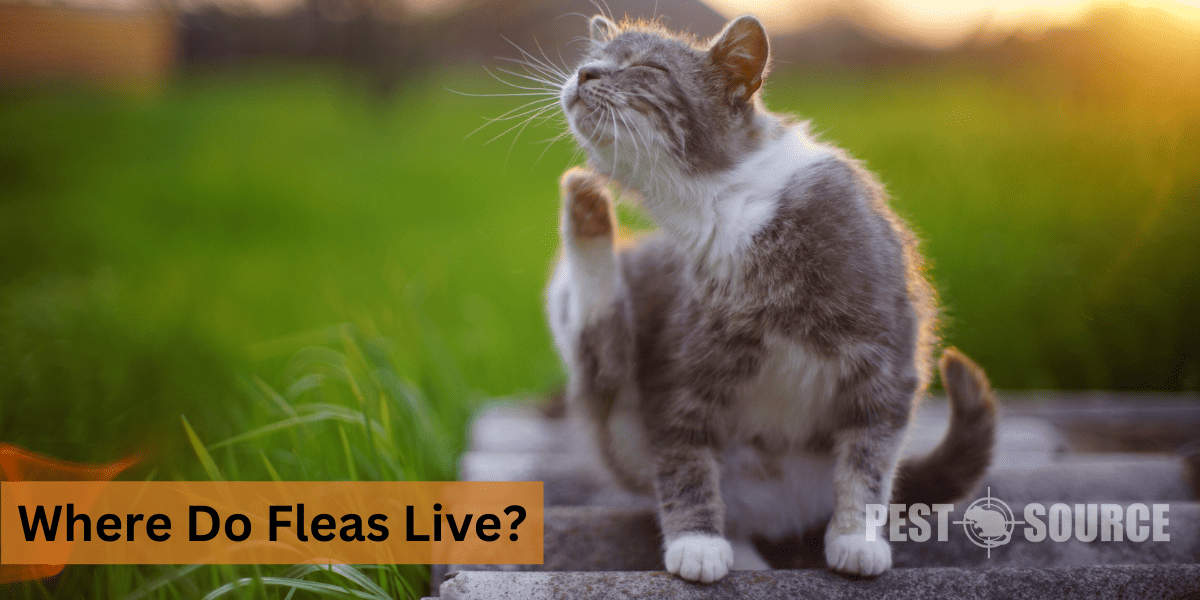Fleas are pesky, hardy parasites that can cause significant discomfort for both pets and humans. Understanding where fleas live, their lifecycle, and their natural habitats can help us effectively combat these tiny invaders.
In this comprehensive guide, we’ll explore the world of fleas, delving into their origins, preferences, and adaptability. With this knowledge, you’ll be better equipped to identify, control, and prevent flea infestations in your home and surrounding environment, keeping you and your furry friends more at ease.
POINTS
- Fleas are adaptable parasites found across the globe, particularly in warm, humid environments, and can infest various hosts, including mammals and birds.
- Fleas lay eggs on their hosts or in their surrounding environment, such as grass, soil, carpets, or pet bedding, enabling them to quickly establish colonies and reproduce.
- In homes, fleas can be found in carpets, pet bedding, upholstery, and even crevices in wooden floors, making it crucial to clean and monitor these areas to prevent infestations.
- Effective flea control involves treating your pets with veterinarian-recommended flea-control products, regularly washing pet bedding and carpets, vacuuming your home thoroughly, and maintaining a less favorable environment for fleas to thrive.
- Understanding flea habitats, preferences, and lifecycles can significantly assist in identifying, controlling, and preventing flea infestations in various settings, keeping your home and pets more comfortable and healthy.
Understanding Fleas: An Introduction
To provide a clearer understanding of the diversity among flea species and their interactions with different hosts, the following table categorizes various flea species, their preferred hosts, and their geographical distribution.
| Flea Species | Preferred Hosts | Geographical Distribution |
|---|---|---|
| Ctenocephalides felis (Cat Flea) | Cats, dogs, and other mammals | Worldwide |
| Ctenocephalides canis (Dog Flea) | Dogs, but can also affect rabbits, cats and humans | Worldwide |
| Pulex irritans (Human Flea) | Humans, pigs, and dogs | Worldwide, more prevalent in areas with poor sanitation |
| Xenopsylla cheopis (Rat Flea) | Primarily rats, but also other rodents | Worldwide, associated with human habitats |
| Echidnophaga gallinacea (Sticktight Flea) | Poultry, birds, and occasionally humans | Warmer climates, especially in the Americas |
| Tunga penetrans (Chigoe Flea) | Humans, pigs, and other mammals | Tropical regions, particularly in Africa and South America |
What are fleas?
Fleas are small, wingless parasites that feed on the blood of mammals and birds. They are notorious for their impressive jumping abilities, which allow them to reach their host undetected, and for wreaking havoc on pets and humans alike. With over 2,000 known species of fleas across the globe, these tiny pests can cause an array of issues, including discomfort, allergies, and even the transmission of diseases.
Why do fleas exist?
Fleas have evolved as an essential part of the ecosystem, acting as a vital food source for other small insects, spiders, and birds. As parasites, their primary role is to feed on the blood of their hosts, allowing them to survive and reproduce. Through this relationship, they contribute to the natural balance of several environments.
How do fleas survive?
Fleas can survive in various conditions, thanks to their adaptability and resilience. They have a high reproduction rate, which allows them to establish their presence in an environment quickly. Their impressive jumping abilities and flat bodies facilitate their movement through fur or feathers, making them well-equipped for accessing their food source. Additionally, fleas have a protective exoskeleton that helps them resist scratching or crushing, further ensuring their survival.
What do fleas need to survive?
To survive, fleas require a host to provide them with a steady supply of blood. They also need a suitable habitat that offers shelter and a place to lay their eggs. Fleas thrive in warm, humid environments, which explains their prevalence during summer months and in tropical regions.
Exploring Fleas’ Natural Habitats
Where do fleas live in the world?
Fleas can be found across the globe, but they are particularly common in tropical and temperate regions. They are more prevalent in areas with high humidity and temperatures, as these conditions are ideal for their growth and reproduction.
Where are fleas most common?
Fleas are most common in areas where their hosts reside. This includes grassy or wooded areas inhabited by wild animals, as well as residential and urban settings where pets such as cats and dogs are present.
What are the main types of flea habitats?
There are three main types of flea habitats:
- Outdoor habitats: Fleas typically live in areas with plenty of shaded, grassy spots. They can also be found in soil, leaf litter, and sand.
- On-host habitats: Fleas live directly on their host’s body, often hiding in the fur or feathers to access their blood supply.
- Indoor habitats: Fleas can infest homes, seeking shelter in carpets, bedding, and even upholstery or curtains, where they can continue to reproduce and feed on their host.
Do fleas live in trees, dirt, wood, or grass?
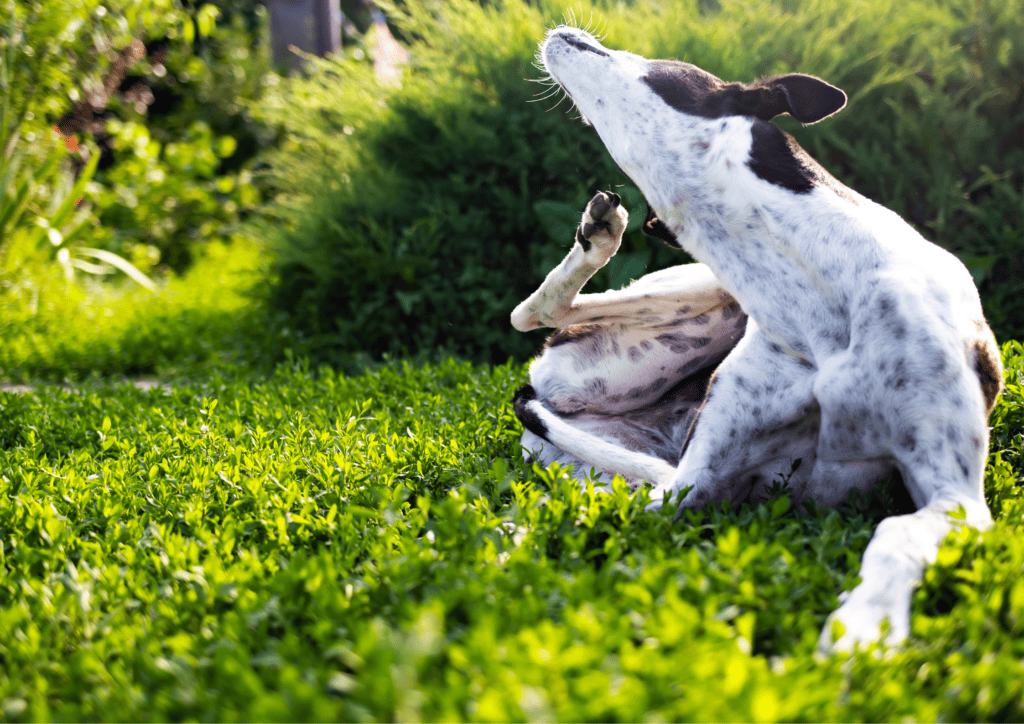
Fleas can be found in various outdoor environments, including dirt, wood, grass, and leaf litter. While fleas don’t typically reside in trees, they may be present on birds or squirrels inhabiting the tree.
Can fleas live on hard surfaces such as hardwood floors?
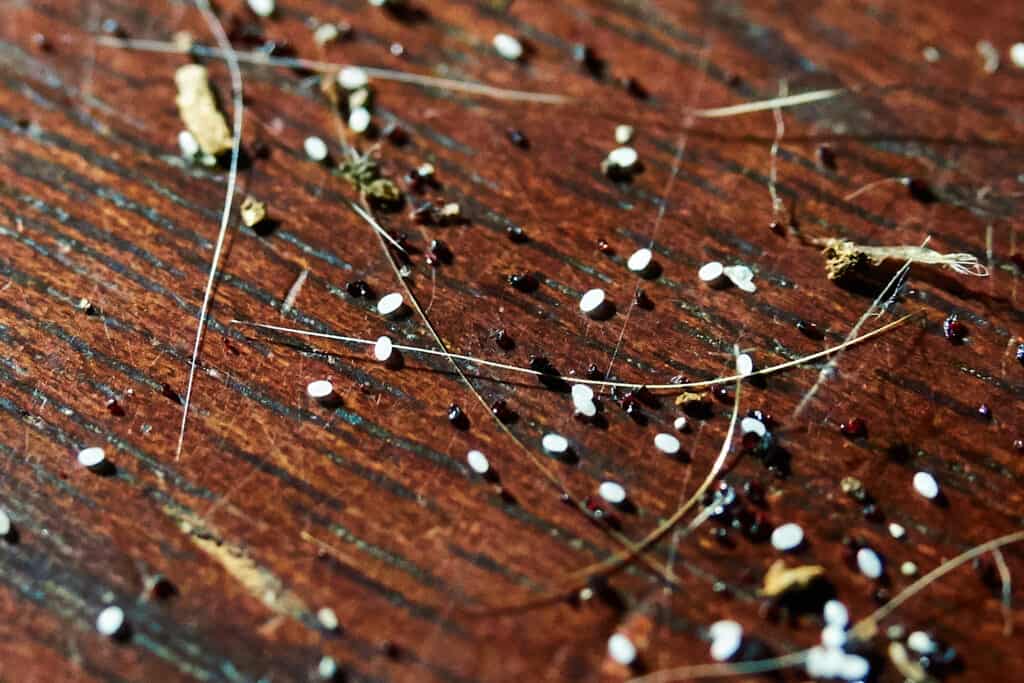
Fleas are unlikely to thrive on hard surfaces like hardwood floors because these areas don’t provide the necessary shelter for them to breed and lay their eggs. However, fleas can still be found on such surfaces, especially if they have been brought inside by a host. In these cases, flea larvae and pupae may still be present in cracks or crevices.
The Flea Lifecycle and Breeding
How long do fleas live?
The lifespan of a flea can vary depending on factors such as environmental conditions and access to a host. On average, an adult flea can live anywhere from several weeks to a few months. However, if a flea is unable to find a host, its lifespan may be shortened significantly.
Where do fleas breed and lay eggs?
Understanding the breeding habits and egg-laying preferences of fleas is essential for controlling and preventing infestations. Here’s a breakdown of where fleas commonly breed and lay their eggs:
- Fleas typically breed on their host’s body while feeding.
- After mating, female fleas lay their eggs either directly on the host or in its immediate surroundings.
- In outdoor environments, these eggs can be found in grass, soil, or leaf litter.
- Indoors, fleas may lay their eggs in areas such as carpets, bedding, or upholstery.
By targeting these key areas, homeowners can more effectively disrupt the flea lifecycle and protect their homes and pets from infestation.
Do fleas have nests? If so, where are these nests typically found?
Fleas do not build traditional nests like some other insects. Instead, their “nests” consist of the locations where they lay their eggs, usually within the host’s fur or the surrounding environment. Indoors, these “nests” can be found in crevices of furniture, pet bedding, or the corners of carpets or rugs.
What is a flea colony and how does it function?
A flea colony is a group of fleas living in close proximity to one another, often with multiple generations present at the same time. These colonies are centered around their host or breeding site and consist of eggs, larvae, pupae, and adults. Fleas in a colony rely on each other for reproduction and feeding, making the colony an essential part of their lifecycle.
Fleas and their Relationship with Animals
Where do fleas live on cats and dogs?
Fleas often reside on the body of cats and dogs, typically hiding in the fur where they can easily access their host’s blood for feeding. They are most commonly found around the neck, tail, or groin areas, as these spots provide warmth and protection from their host’s grooming habits.
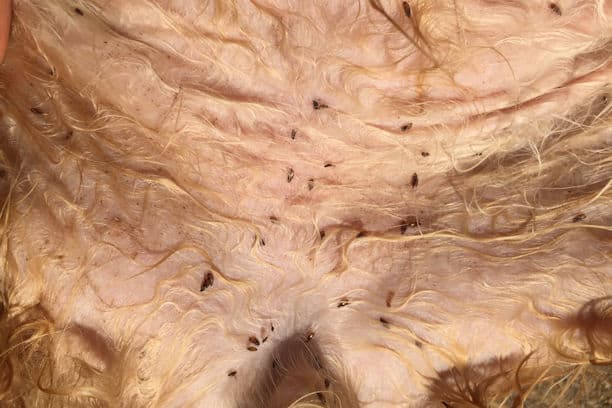
Do fleas only live on animals? What other hosts can they infest?
While cats and dogs are the primary hosts for fleas, they can also infest other mammals and birds. Some species of fleas prefer specific hosts, such as rats or rabbits. Additionally, fleas can bite humans if their preferred host is not available, although they will not complete their lifecycle on humans.
What do fleas live off of when residing on a host?
Fleas primarily live off of the blood of their host. Adult fleas feed on blood, which provides them with the necessary nutrients to survive and reproduce. Flea larvae, on the other hand, consume organic debris and the feces of adult fleas, which is rich in digested blood.
Fleas and Their Interaction with the Domestic Environment
Can fleas live in your house?
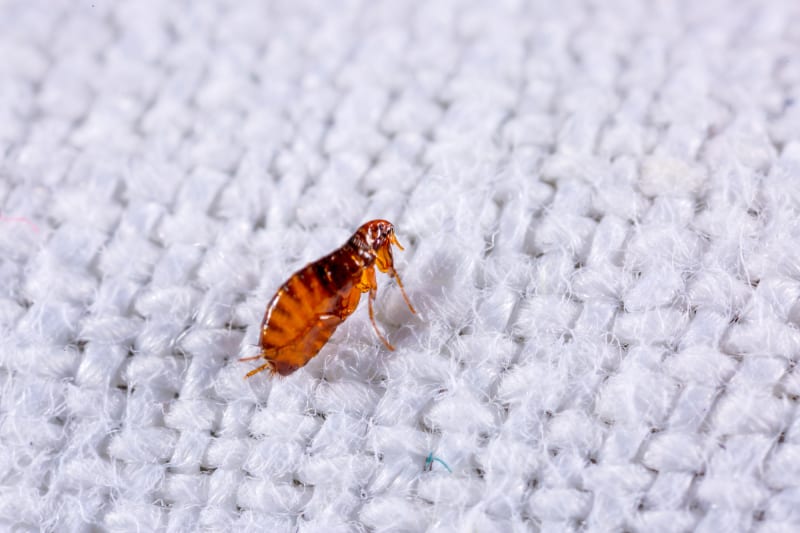
Yes, fleas can infest homes, especially if they have been brought inside by a host such as a pet or on a person’s clothing. Once in the home, fleas can establish themselves in various areas, laying their eggs in carpets, bedding, and other fabrics.
Where do fleas live in the house?
In the home, fleas can be found in a variety of locations. Some of the most common areas include:
- Carpets and rugs
- Pet bedding
- Upholstered furniture
- Baseboards and cracks in wooden floors
- Curtains and other fabric window coverings
Where can fleas live in your home and furniture?
Fleas can reside in various parts of your home and furniture, particularly in soft or fabric surfaces that provide shelter for hiding and laying their eggs. They can infest sofas, chairs, and mattresses, as well as hiding in crevices of wooden furniture.
Do fleas live in mulch or cardboard boxes? Can they climb walls?
Fleas can live in mulch or leaf litter found outdoors. They may also reside in cardboard boxes, especially if these containers provide a suitable, undisturbed environment for breeding. While fleas cannot climb smooth surfaces like glass or polished walls, they can use their strong legs to leap onto vertical surfaces such as textured walls or fabric window coverings.
Where do fleas hide in the house?
Fleas are experts at hiding and can often be found tucked away in the following areas:
- In the folds and seams of pet bedding
- Within the fibers of carpets, rugs, and upholstered furniture
- In the cracks and crevices of baseboards and wooden floors
- Behind or under appliances and furniture
- In closets or other dark, undisturbed areas
How to combat fleas inside homes?
To effectively combat flea infestations within the home, it’s essential to understand the variety of control products available and how to use them safely. The table below outlines different types of flea control products, their intended application areas, and important safety notes, providing a comprehensive guide for homeowners.
| Product Type | Application Area | Safety Notes |
|---|---|---|
| Topical Treatments | Pets’ skin and coat | Follow veterinarian guidance; monitor for reactions |
| Oral Medications | Administered to pets | Use under veterinarian advice; ensure proper dosage |
| Sprays | Indoor surfaces, pet bedding | Ventilate area; avoid inhaling fumes |
| Powders | Carpets, pet bedding | Use sparingly; keep away from pets’ and children’s reach |
| Foggers | Entire home | Vacate home during treatment; follow safety instructions carefully |
The Mystery of Fleas’ Origins
Where do fleas come from?
Fleas have been a part of the Earth’s ecosystem for millions of years. They are believed to have evolved from a winged ancestral insect and have adapted to their parasitic lifestyle over time. Today, fleas can originate from various sources, such as wild animals, neighboring pets, or even infested items brought into your home.
Can fleas come from outside? If so, how can they get into your house?
Yes, fleas can come from outside your home. They may hitch a ride on your clothing, shoes, or pet, or even jump through open doors or windows. Fleas are exceptional jumpers, making it easy for them to find their way inside your house from the outdoor environment.
Where does the flea population in the yard or outside come from?
Flea populations in your yard or outside areas likely come from infested wildlife such as rodents, birds, or even neighboring pets. Fleas can also find their way into your yard via discarded items, leaf litter, or tall grasses, where they then lay their eggs and multiply.
Preventing and Dealing with Flea Infestations
How to spot a flea infestation: where to find fleas and their nests in your house?
Spotting a flea infestation can be challenging. Signs of infestation may include:
- Unexplained itching or irritation on pets or humans
- Flea feces or “flea dirt” in pet bedding, carpets, or upholstery
- The presence of adult fleas, larvae, or pupae, usually spotted by using a fine-tooth comb on your pet’s fur
- Increased scratching or grooming behavior in pets
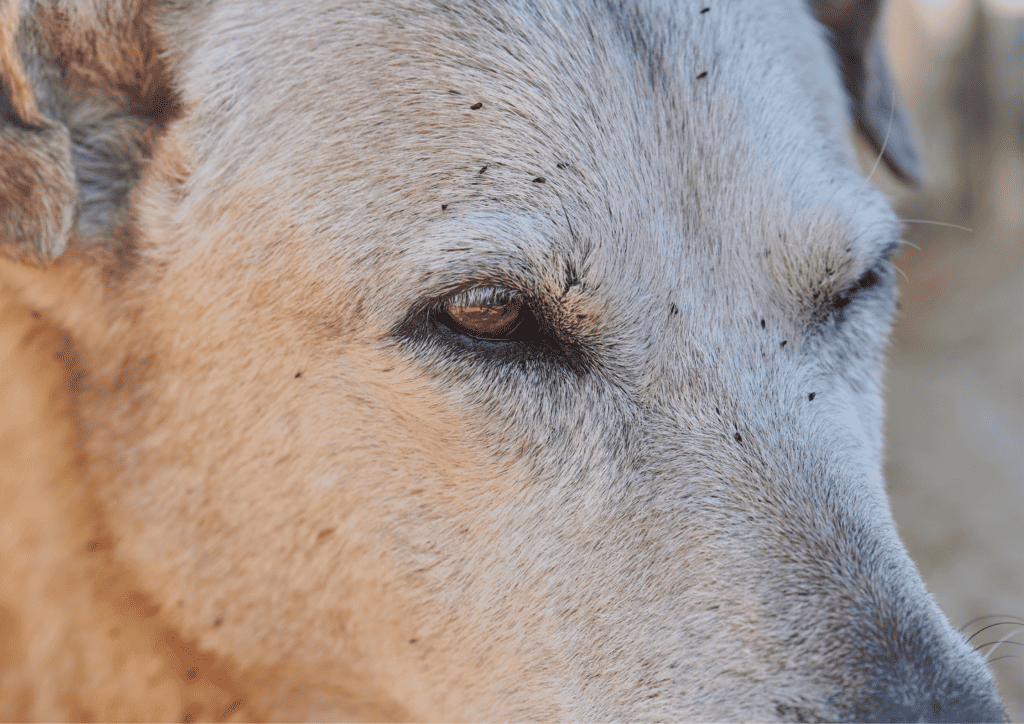
Flea “nests” can be found in areas such as pet bedding, carpets, and upholstered furniture.
What do fleas like? Can understanding their preferences help in managing an infestation?
Fleas prefer warm, humid environments and a stable food source, usually in the form of a host. By understanding their preferences, you can create a less favorable environment for them to establish a presence in your home. This may involve reducing humidity levels, frequent vacuuming and washing of pet bedding, and regular grooming of your pets.
Living with fleas: what should you do when your house is infested?
If your house is infested with fleas, it’s essential to take prompt action to eliminate and prevent the fleas from multiplying. Some steps include:
- Treating your pets with flea-control products recommended by your veterinarian
- Washing pet bedding, carpets, and upholstery in hot water regularly
- Vacuuming your home thoroughly and disposing of the vacuum bag or contents carefully
- Sealing any openings or cracks in walls or floors to limit flea hiding places
- Seeking professional pest control services if the infestation is severe or persistent
Conclusion: The Unique Adaptability of Fleas
How do fleas adapt to different environments?
Fleas have an exceptional ability to adapt to various environments, thanks to their robust exoskeleton, strong legs for jumping, and high reproduction rate. They can survive in a range of habitats, from outdoor leaf litter to the fibers of your carpet, allowing them to thrive in many locations.
What makes fleas such a persistent pest around the world?
Fleas’ persistence as a global pest can be attributed to their adaptability, high reproduction rate, and elusive nature. Their ability to hitch rides on hosts, jump long distances, and multiply rapidly makes it difficult to entirely eradicate them from an area. Additionally, their hardy exoskeleton and small size make them difficult to spot and effectively control.
How understanding where fleas live can aid in their control and prevention?
By understanding where fleas live, their lifecycle, and their preferences, you can develop effective strategies to control and prevent infestations. This knowledge allows you to identify and target potential “hot spots” for fleas in your home, monitor and treat your pets appropriately, and maintain a less desirable environment for fleas to thrive.

